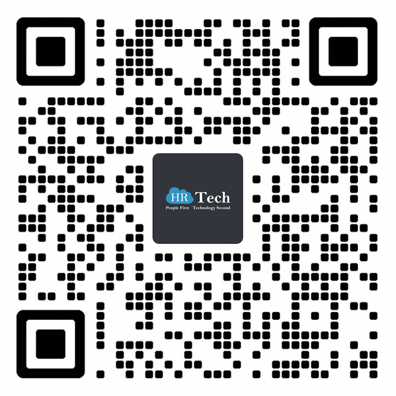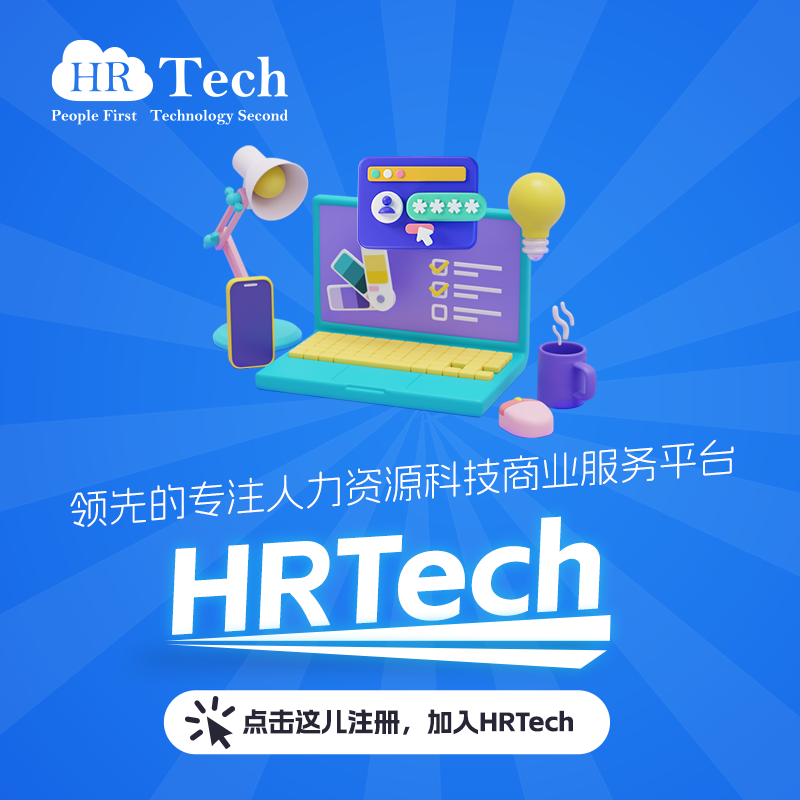-
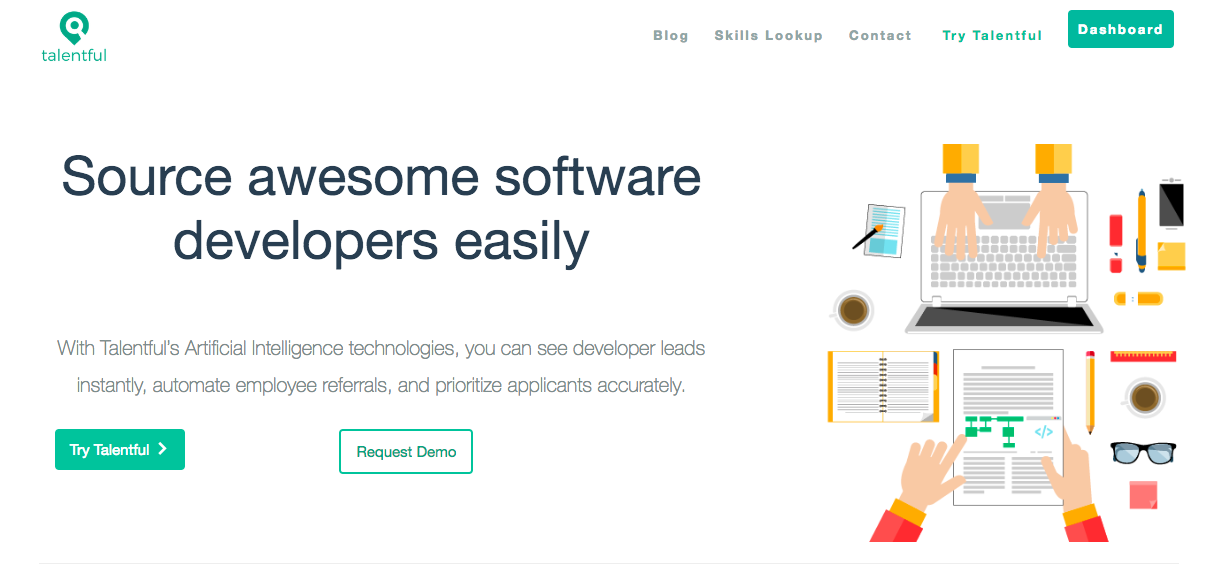 AI
AI
招不到程序员?「Talentful.ai」用 AI 建立千万名 IT 人才的数据库
来源/36氪 文/雨柔
在硅谷,招聘一个技术人员平均要花费 22000 美元。
伴随着互联网化进程,企业对 IT 从业者的需求剧增,造成数千万的人才缺口。无论在中国还是海外,技术人才招聘都是人力部门的头等难题。36氪近日接触的北美公司「Talentful.ai」想用 AI 为企业降低 IT 人员招聘成本,提高效率。
Talentful 主要关注社会招聘的第一步,即找到合适的候选人并建立联系。其难点一是人才资源难以获取,即使拿到联系方式,之后的初步沟通等工作要占用 HR 大量时间;二是招聘人员往往不懂技术,难以筛选到合适的候选人。硅谷企业招到一个程序员平均要花费 22000 美元,Talentful 希望运用自然语言处理和身份识别技术将招聘费用降到 4000 美元。
为解决人才资源问题,Talentful 利用爬虫网络检索 IT 人才的开源代码、学术文章、博客、会议议程、Twitter 坐标等公开信息,建立起了 1900 万北美 IT 从业人员的人才数据库,和数亿非 IT 从业人员信息。
为降低对 HR 从业者技术素养的要求,Talentful 会对候选人信息进行分析,建立评估指标,供招聘人员参考。当企业希望搜索到合适人才,想建立联系时,AI 系统可以自动发送定制邮件,并对邮件进行追踪和分类。
Talentful 还上线了自动内推系统,自动从员⼯的朋友圈和电⼦邮件列表中找出符合工作要求的朋友,通知员工内推,让每个公司可以有自⼰独有的人才招聘渠道。
公司正在探索进入中国市场的可能,一方面为美国企业招聘来自中国的技术人员,另一方面尝试为中国企业提供人才服务。但相较于美国,中国开发人员没那么热衷于写开源代码、参加行业活动,公开信息相对较少。Talentful 观察后认为,中国技术人才的简历大都沉淀在各大互联网招聘平台,Talentful 计划和这些招聘网站展开合作。
Talentful 创始人兼 CTO 陈嘉告诉36氪,公司遇到最大的困难在于市场推广。招聘在企业价值链上属于成本中心,企业的付费意愿较低。Talentful 开始尝试与一些大型的人力管理系统服务商合作,为其提供解决方案。
用AI 技术搜寻和匹配人才或将逐渐成为科技公司的标配。今年 4 月,AI 招聘公司 Fetcher 获250 万美元种子投资,Fetcher 从 LinkedIn、Twitter 等网站获取信息并建立数据库,目前已有近 1 亿的人才储备。中国的人工智能招聘初创企业中,猎萝卜去年拿到 1 亿元天使轮融资,Bello 今年也拿到千万元的天使轮。
Talentful 系统于 2016 年 1 月上线,以 SaaS 的形式提供服务,客户大多为中小型企业,2017 年营收约 12 万美元。
团队目前有六个人,创始人兼 CTO 陈嘉是美国埃默里⼤学 MBA,加拿⼤⾥贾纳⼤学计算机硕士,有 15 年软件行业工作经验;CEO Michael Matthies 有四次创业经历(公司曾被埃森哲、IBM 收购),曾在多个中大型公司担任⾼级销售主管。
公司正在寻求 pre-A 轮融资。
-
 AI
AI
Google Hire重大更新!全面AI技术支持,简历筛选安排面试将大幅节约时间
综合来源/ gadgets google hire blog等
更新要点
Google Hire通过更新获得了新的AI驱动的工具
Google Hire可以更快地安排面试,并在简历中突出显示关键字
雇用1000人以下的美国企业适用Google Hire
随着去年推出Google Hire,Google通过将招聘过程整合到招聘人员,已经花费大量时间去查工具(如Gmail,Google日历和其他G-Suite应用程序),来简化招聘流程。旨在帮助中小型企业有效招聘。招聘人员表示,Hire从根本上改善了他们的工作方式,减少了应用程序之间的上下文切换。
实际上,当他们衡量用户活动时,他们发现Hire减少了完成日常招聘任务的时间 - 比如审查应用程序或安排面试 - 节省时间高达84%。
Google启动AI
通过整合Google AI,Hire现在可以减少重复耗时的任务,如安排面试,进入一键式交互。
这意味着招聘团队可以在后勤上花费更少的时间,更多的时间与人交流。
Hire中的新功能使招聘人员可以做到如下几点:
在几秒钟内安排面试:
招聘人员和招聘协调员花费大量时间在后勤管理 - 查找日历上的可用时间,预订房间,并将正确的信息汇集到预备面试官处。为了简化这一过程,Hire现在使用AI来自动建议面试者和理想时间段,从而将面试计划减少到几次点击。
通过整合Google AI,Hire现在可以将重复耗时的任务减少为一键互动。这意味着招聘团队可以在后勤上花费更少的时间,更多的时间与人交流” 谷歌在其博客文章中表示。 自推出以来,Google Hire带有G Suite集成功能,可让应用程序与Gmail和Google日历等其他应用程序同步工作。Google声称Hire可以减少招聘团队招募任务的时间达84%。
最新的更新基本上整合了Google AI,以减少做任务时的点击次数,让AI建议发挥作用。
Google Hire自动提供面试官和理想时间段,将面试安排减少到几次点击。操作如下:
Photo: Google
它试图减少手工查看日历空闲时间,为您查看并提供理想的时间段。此外,如果面试官最后一分钟取消,Hire不只是提醒你,它还推荐可用的面试官,并可以很容易且快速地邀请面试官。
所以我们可以看到国内外面试安排都是一个复杂而且繁琐的事情,面试管理这块的需求也日益突出。
自动突出显示简历重点
相当一部分招聘人员的时间花在审查简历上(我们都知道这一点)。有人告诉我,当团队正在观看与Hire进行互动的人时,他们发现客户经常使用“Ctrl + F”,通过简历扫描搜索正确的面试者的技能 - 这是一项重复的手动任务,可以轻松实现自动化。
另一个常见的招聘难题是在简历中查找关键字。 Hire的AI现在通过分析工作岗位描述,或搜索查询术语并在简历中突出显示相关单词(包括同义词和缩略词)来节省手动搜索它们的时间,自动为招聘人员找到这些单词。
Photo: Google
点击致电候选人:
无论他们是筛选候选人,进行面试还是跟进录用信,招聘人员每天都会有数十次电话交谈。现在通过点击通话功能简化每个电话对话,并自动记录通话,以便团队成员知道与候选人通话的人员。它是如何工作的,Derek? 很高兴你问这样的问题!
系统会拨打您要给求职者的电话,然后当您拿起电话时,系统会向求职者拨打该号码。且您永远不会丢失您的收件箱内容,电话会录音,并且您可以在电话中记笔记。我问是否有发信息功能,市场表明,大约98%的人回复短信,很少听到语音信箱或回复他们不认识的号码。
他们向我保证,这个过程非常简单,并且您电话辛苦获取的宝贵数据将会轻松转移。
最后,现在通过点击通话功能简化每个电话对话,并自动记录通话,以便团队成员知道谁已经与候选人通话,而不是多次拨打同一个候选人。
所有那些雇员不足1000人的美国企业都可以购买Hire服务。在中国不行~~
关于Google Hire 从去年7月推出,旨在帮助中小型企业有效招聘。它允许招聘人员将工作发布到多个工作现场,跟踪申请,安排面试,甚至可以在一个平台上获得面试反馈。现在,在一年之后,谷歌已经更新了招聘人工智能驱动工具,以实现“更聪明,更快速的招聘方式”。此更新带来的新功能可以加快日程安排访问速度,为日志记录提供简单的工作,并简化相关简历,从而减少耗时。
“通过整合谷歌AI,服务现在减少重复,耗时的任务,进入一键式的互动。这意味着雇佣团队可以花费更少的时间与物流和更多的时间与人联系”
以上由HRTechChina 综合编译,仅供参考!
-
 AI
AI
人工智能:人力资源行业真正的杀手应用程序
对人工智能的炒作和期望现在是天高。我们很快就会和我们的电脑通话。无人机将提供我们的杂货; 我们的汽车会开车自己; 而大多数白领工人将会是监控机器。这一切都是真的吗?这真的会发生吗?
作为一位遵循技术几十年的行业分析师和工程师,我想说我们正处于一个有趣的阶段:一方面,炒作远远超出了现实; 另一方面,上涨幅度可能比我们想象的要大得多。在人力资源方面,价值的机会是巨大的。
虽然几乎所有人力资源供应商现在都在建立人工智能团队,我们都希望我们的系统更加智能和实用,但我相信这个市场还很年轻,所以我想指出一些需要考虑的事情。
上周我参加了一个关于招聘自动化的会议,我们听取了奥克兰A的总经理比利比恩谈到钱球。在对Sabermetrics的历史和数据如何改变了棒球比赛的精彩讨论之后,他告诉我们,他现在在他的名单上有六位博士学位机器学习工程师,“拥有最多博士学位的团队真的很难被击败。”这就是业务中发生的事情。
人工智能在人力资源和管理中的作用
让我们认识到AI不是一些神奇的电脑化角色; 它是一个广泛的算法和机器学习工具,可以快速注入数据,识别模式,并优化和预测趋势。系统可以理解言语,识别照片,并使用模式匹配来获取关于情绪,诚实,甚至个性的信号。这些算法不像人类那样“直观”,但它们速度很快,因此它们可以在几秒钟内分析数百万条信息,并快速将它们与模式关联起来。
统计学上的AI系统可以通过绘制可能结果的曲线来“预测”和“学习”,然后根据许多标准优化决策。所以你可以想象一个人工智能系统,可以查看可能的人口统计数据,工作经历以及与候选人面试的问题,然后“预测”他们在工作中的表现如何。(HiredScore,Pymetrics,HireVue,IBM和其他公司正在研究这方面的工作。)
虽然这比听起来更复杂,但这是一项重要且高尚的举措。几周前,当我被问到这个问题时,我回答说:“我们今天制定的大多数管理决策都是由我们的裤子所在位置完成的。如果这些系统让我们变得更聪明一些,我们可以极大地改善我们的运营。“
是的,有很多风险和障碍需要处理,但潜力非常大。
我们可以期望看到哪些杀手级应用程序?
让我列出我们可以看到突破性成果的许多领域中的一小部分。
在招聘中,我们做出了很多关于直觉的决定。一项研究表明,大多数招聘经理会在候选人的头60秒内对候选人做出决定,通常基于外表,握手,着装或演讲。我们是否真的知道什么样的特征,经历,教育和人格特质能够保证某个角色的成功?不,我们不。经理和人力资源专业人士使用数十亿美元的评估,测试,模拟和游戏来雇佣人员 - 但很多人告诉我他们仍然有30-40%的人选错了。
基于人工智能的算法可以清除简历,找到优秀的内部候选人,分析高绩效人员,甚至解码视频访谈,并告诉我们关于谁可能成功的信号。我们的一个客户现在使用Pymetrics的基于人工智能的游戏化评估来筛选其市场和销售角色的候选人,他们的成功率提高了30%以上,同时消除了固有的所有“面试偏见”和“教育谱系偏见”当前的过程。AI在招聘中将是巨大的。(7月27日 在上海,招聘科技创新大会中将会有谈到类似的话题,值得关注)
顺便说一句,尽管我们都担心工作技能(软件技能,销售技能,数学技能等),但大多数研究表明,技术技能只占一个人成功的一小部分。在我们最近关于高影响力人才招聘的研究中,我们发现,那些从招聘中获得最高财务回报的4级成熟公司将其招聘标准的近40%分配到情感和心理特征,如抱负,学习敏捷性,激情和目的感。人工智能也会发现这一点吗?也许。
在员工发展和学习,我们真的不知道如何完美地“训练”人。全球L&D行业超过2000亿美元,大多数学习专业人士告诉我们,至少有一半是浪费(遗忘,不恰当的应用,或只是浪费人们的时间)。但我们不知道这是哪一半!作为一个人,你是否知道你需要学习什么以更好地工作?我们都有一个非常好的主意,但是如果我们有算法来监控和研究团队中表现最好的成员的技能,行为和活动,然后告诉我们如何更像他们呢?这类“类似Netflix”的算法现在正在进入学习平台的世界,使得学习与观看有线电视一样有用和有趣。市场还很年轻,但机会很大。我们的研究表明,普通员工每周少于25分钟的时间进行培训和学习; 如果我们让这个时间更相关,每个人都会表现得更好。
在管理和领导方面,我们像禅师一样运作。我们阅读书籍,去讲习班,复制我们敬佩的老板,并且荣耀当天成功的领导者。我们真的了解领导科学吗?我建议这是一个短暂的话题。今年我们专注于目标,使命和追随者。就在几年前,这就是“仆役式领导”,而我年轻的时候就是“执行力和财务智慧”。大多数研究发现,有几十种管理和领导特质定义了成功,我们每个人都带来了一点点不同他们的独特组合。
AI现在可以帮助解码这个。我知道有三家供应商构建了“基于AI”的辅导工具,需要反馈的系统,阅读评论以及员工和团队的直觉情绪。他们使用这些数据来将这些个人和团队的问题与高绩效团队进行匹配,并利用这些数据为经理和主管“推动”如何做得更好。一位客户告诉我,在使用这个工具仅仅3个月的时间里,他们的领导团队仅仅基于小的行为推动就显示出企业价值提高了25%。
在欺诈和合规方面,机会是巨大的。一项研究发现,窃取或实施犯罪的员工对同龄人(与他们一起工作的人有不良习惯)具有“传染性”。人工智能可以查看组织网络数据(电子邮件流量,评论意见)并确定压力领域,可能存在道德失范的领域以及许多其他形式的合规风险,并指出人力资源部或合规官员的“红色区域”他们可以在不良行为发生之前进行干预。
在福祉方面,人工智能现在被用来识别导致工作表现差的行为。在安全方面,人工智能可以识别导致事故的行为和经历。在销售中,人工智能可以通过微调和真实数据向专家提供初级销售人员的提示。该名单继续下去。
有风险吗?人们分析会发生什么?
所有这些应用程序都是新的应用程序,并且看起来很令人兴奋,但有很多风险需要担心。最大的挑战在于,如果没有“训练数据”,人工智能就无法工作。换句话说,算法会从过去学习。如果你目前的管理实践存在偏见,歧视性,惩罚性或过度等级化,你可能会把所有你讨厌的事情制度化。我们需要透明和“可调整”的AI,以便我们可以检查这些模块以确保它们正在做正确的事情。就像早期的汽车并不总是直行,我们早期的算法将需要“保险杠”和“调音旋钮”,以便我们学习如何使它们更加精确。
这些系统可以将偏见制度化。假设你的公司从未雇用女性工程师,并且拥有很少的非洲裔美国人工程师。人工智能招聘系统自然会得出结论:女性和黑人工程师不太可能进入管理层。这种类型的偏差必须从算法中仔细去除,并且需要时间才能做到这一点。
数据暴露和无意滥用也有风险。考虑一种常用的分析方法,我们试图预测高绩效员离开公司的可能性。如果我们告诉管理者“这个人很有可能离开”我们实际上可能会制造错误的行为 - 管理者可能会忽视这个人,或者以不同的方式对待他或她。我们必须认真学习如何运用行为经济学,所以我们不要让AI偶然变成“HAL”(电影2000)。人工智能是一种建议和改进的“工具” - 而不是今天的独立解决方案系统。
我本周与Entelo的一位AI领导交谈过,并且我们讨论了创建“解释性”和“透明”AI系统的必要性。换句话说,每当系统做出决定时,它应该告诉我们为什么做出这个决定,所以我们人类可以决定它使用的标准是否仍然准确。他告诉我这是新工具最重要的标准之一,不幸的是,今天大多数AI系统都是一个完整的黑匣子。
考虑一下当自动驾驶车辆发生碰撞时会发生什么。我们花了很多时间来诊断它是如何发生的,视觉或算法系统失败,以及可能导致事故的条件。如果人工智能对候选人,薪资调整或管理层干预进行错误推荐,该怎么办?我们会发现吗?我们会诊断它吗?我们会注意到它太迟了吗?我们还有很多工作要做,并且学习如何“训练”我们的基于管理的人工智能系统才能正常工作。
人工智能将成为人力资源解决方案的差异化特征吗?
现在围绕人工智能的炒作处于历史新高。每个人力资源软件供应商都希望您相信他们拥有一个机器学习团队和一流的AI解决方案。是的,这些功能对这个行业非常重要,但不相信炒作。
人力资源工具的成功取决于许多因素:算法的准确性和完整性,系统的易用性,但比提供所谓的“狭窄人工智能”的能力更重要 - 或者非常具体的解决方案解决你的问题。这只能在供应商拥有大量数据(以训练其系统)时才能完成,并且他们对其工作效果获得大量反馈。所以我相信进入障碍将成为关注焦点,业务战略和客户亲密关系,而不仅仅是拥有优秀的工程师。
除非你可以在公司证明这一点,否则不要购买一个黑盒子系统。每个公司的管理和人员决策往往都是基于文化的,所以我们必须花时间在现实世界中尝试这些系统并调整以充分利用它们。例如,IBM花费数年时间为公司,文化和商业模式优化其基于AI的薪酬和职业解决方案。他们现在将这些工具引入企业客户,并发现每个实现都会教授IBM关于算法的新内容,以使其更好地适应该行业,文化或组织需求。
尽管存在这些问题,上行是巨大的
尽管存在这些挑战和风险,但其优势是巨大的。公司将40-60%的收入用于工资,其中大部分的巨额费用是由我们对直觉感到的管理决定所驱动的。随着人力资源管理系统变得更加智能化,更加成熟,并且更专注于具体问题,我相信我们将看到生产力,绩效和员工福利的显着提升。我们必须耐心,警惕,愿意投资。
以上由hrtech AI 翻译完成,仅供参考!
作者:JOSH BERSIN
-
 AI
AI
对话戴维·尤里奇:HR创造价值的“正确姿势”
来源/HBR-China 哈佛商业评论
“他们(高效能的HR)必须为客户和利益相关者创造明确的、实实在在的价值。”
——戴维∙尤里奇
学术与实践常碰撞,HR与业务要牵手
人力资源管理(HRM,Human Resources Management)是一个人人耳熟能详却又如雾里看花的概念。耳熟能详是因为HR概念自诞生以来就在吸引着管理学学界以及行为科学界的学者们。但是HRM这个概念同时又是模糊的,因为伴随着世界的VUCA化(Volatility, Uncertainty, Complexity, Ambiguity),HRM也“不幸”地兼备了上述的特征,不少人对HRM的理解可能还停留在“人事管理”的初级阶段。
为了更好地实现人力资源开发利用,完成业务的腾飞发展,越来越多的学者开始和最佳实践的企业牵手,在实践中探讨理论与实际的深度结合。被认作“现代人力资源之父”的戴维∙尤里奇(Dave Ulrich)也不例外。尤里奇因为创造性地提出了COE、SSC、HRBP的人力资源三支柱体系而声名鹊起,在商界收获了一大批拥趸。
在尤里奇教授最近一次的中国之行中,百度成为重要的一站。百度一向以能培养出大量专精的行业人才而出名,尤里奇和百度的HR核心团队与HR政委们(业务高管,同时在HR任职,双线汇报)在这场研讨中,激荡出什么样的火花?百度的最佳实践又有哪些值得所有HR同行借鉴呢?
Outside in,HR要学会以“接收方原则”设计政策
在这场研讨中,尤里奇教授再次强调了他一以贯之的观点,即由外而内的HR视角(HR outside in),这一理论意味着HR将不再是曾经的HR,只负责招聘、员工关系和薪酬管理等传统的职能,而是要进一步地深入公司业务,认真考虑所有的利益相关者(stakeholders)并从这些利益相关者的角度出发设计人力资源的政策与实践。
为了能够深入了解百度业务和在研讨中提供有效的建议和意见,尤里奇教授先与百度人力资源高级副总裁刘辉就百度的战略规划、HR基本情况以及当下痛点问题做了一个小时左右的讨论。随后便是尤里奇教授和百度众HR们的“华山论剑”。
尤里奇教授认为,现在的HR以及未来的HR是与价值链挂钩的,而价值的感知实际上是由接收方而非传递价值的一方所定义。那么究竟谁才是HR从业者们该关注的利益相关主体呢?
如果在十五年前或者十年前,我们或许还会脱口而出HR的stakeholders当然是员工和直线经理了,但在HR需要为组织创造明确价值的今天,stakeholders的构成更为复杂,包括投资者和客户在内的人群都将是HR们必须关注的对象。
HR产出价值的三个维度:人才、组织胜任力、领导力
尤里奇心目中的HR是理想的HR,然而人力资源的利用、开发、配置、管理从来不是一件简单的事。以泰勒(Taylor)的科学管理理论为代表的科学管理时代,或许是资本家们最为欢欣鼓舞的一段时光,基本完全量化的指标和流程某种意义上实现了人力资源的利用,但由于未考虑到人的社会属性和不同工作的性质,过度简化的科学管理不可避免地走向没落,随之而来的是更为关注“人”的人力资源管理和人力资本管理,然而不论是哪一种理论作为指导,HRM的复杂性都没有降低。
理论在发展,公司内的HRM自然也在不断进化。在采用了三支柱的HR体系后,为了更有效地将前沿理论落地为实践,百度在人才、组织以及领导力上均提出了助力业务成长的战略方针。
比如在人才方向,百度的HR们已不满足仅仅实现招聘结果的交付,他们会更具前瞻性地站在业务角度去分析市场上的人才流动。无独有偶,尤里奇同样提出了人才(talent)、组织胜任力(organization capability)和领导力(leadership)的三元论,他认为HR部门的产出的价值有三个维度,第一是在个人维度上实现人才的优化,第二是在组织维度上实现组织胜任力的增强,第三则是与前二者相辅相成的领导力。
人才:HR要从被动支持到主动创造
尤里奇认为“人才=能力×忠诚×贡献”,只有当一名员工同时具备了胜任工作的能力、投入度并能高质量地完成工作才可以称之为一名优秀的人才,而HR部门在这三个模块中都大有文章可做,尤里奇也按照不同模块列出了一份“人才清单”,其中包含了18项HR们可以操作的项目。
在这份清单中,百度的HR核心团队和政委们认为“设定人才筛选标准”、“为员工赋能”和“保留关键人才”等项目是目前诸多公司都在努力解决的问题。
现阶段的职位需求往往是由业务部门提出并由HR部门跟进和给予支持,而在outside in视角体系下,HR从业者应该去思考客户、投资者会对我们的业务提出了怎样的要求,而为了满足这些需求我们又该以何种方式选择何种人才,从被动支持到主动创造是实现人才优化的第一步。
同样的,赋能员工和保留关键人才也需要注意视角的问题,提高员工的敬业度不仅仅是一个人的问题,不论人才的去或留,HR们都应当从业务伙伴的角度出发,从业务维度为所有员工创造共同奋斗的愿景,并提供足够的机会使他们不断感受到自己的成长。
组织:由外而内思考组织形式与组织文化
而在组织维度,组织形式的变革也一直是管理类书籍中常被提及的重要内容。百度在确定了“夯实移动基础,决胜AI时代”的公司战略后,就在组织构架上进行了一系列的变革。而这一系列的组织变革也正与尤里奇教授的理论有着异曲同工之妙。
尤里奇教授认为在经历了垂直的职能制、扁平的矩阵制后,新一代的组织形式将由组织的胜任力所决定,这一概念意味着公司的组织形式会由更多的外部stakeholders所关注和定义,因为胜任力是指一家公司为人所知能做并擅长做的事情,而且正确的胜任力会帮助组织实现其战略,HR们需要从招聘、培训、绩效与激励、传播、领导力和文化都由外而内地思考问题,比如:“我们所招聘的人是否是客户们的选择?”、“我们对于绩效的标准是否符合客户们的预期?”以及“文化层面我们是否与客户定义保持一致?”。
不难看出,组织文化的概念在尤里奇的视野中也有了不小的转变,曾经经常谈到的价值观、准则和行为方式不再是文化的定义,组织文化在由外而内的视角下成为了核心客户们对于公司的主观感知。这也要求被看作是组织文化传播者和校验者的HR人员进一步从外部的视角审视自己组织的文化。
领导力:反作用于人才和组织
如果HR们可以做到上述这些内容,那么恭喜,您的组织已经具备了优秀的人才和专业的胜任力。第三项需要HR助力的事项是领导力,具备领导力的管理者会反作用于人才和组织,从而帮助人力资源的开发与利用。
值得一提的是,正如文首的引用,这些价值不仅仅到招到了合适的人、搭建了一个领导力的项目就戛然而止,这些价值需要是明确的、实在的。举个例子,对于投资者而言,HR们应当传递的价值应该是一个培训项目或者关键人才引入带来的投资回报率增加而非单纯的HR政策本身。
在与百度的研讨中,尤里奇教授与刘辉和在座的HR和政委们还就“HR outside in”是否适用于AI公司、百度的AI赋能以及HR创造价值的具体实践等问题进行了进一步的讨论。在百度,HR政委的身份是具有特殊性的,他们既是业务高管,也是HR负责人,更加了解业务痛点。
当他们学会使用HR的理论工具后,会更敏感地发现HR与业务的深度结合点,让HR管理工具对业务发展起到更明显的助推作用。百度某人工智能团队总经理兼HR政委表示,尤里奇教授分享的HR outside in Evolution 模型可以很恰当地用于部门内的工作中,让管理思路更加清晰。
不止百度,相信有一批快速转型和发展的中国企业正在越来越看重HR的工作,而HR们也正在积极地追寻学术前沿,赋能自己,认知升级,努力学习这些能为组织创造价值的“正确姿势”。而作为学术界的大师级人物,尤里奇也通过百度对中国科技企业发展有了更多的了解,也许未来会有更多适合中国企业的优秀理论工具浮出水面。
-
 AI
AI
小型企业选择云端人力资源部门的6个理由
全球各地的企业都在快速唤醒云计算的想法及其提供的诸多好处。无论是公共还是私有云计算,大量企业都以某种方式使用云。
随着许多关键业务操作以极快的速度转移到云端,人力资源部也不例外。事实上,组织通过将其人力资源流程转移到云生态系统来节省一笔财富。
是的,实施基于云计算的工资软件或人力资本管理解决方案可以解决与员工和人力资本管理有关的各种问题。
这里有六个原因说明为什么云中的人力资源部门对小型企业来说是完全合理的。
1.人力资源聊天机器人
所以,我们都知道'Siri'(臭名昭着的聊天机器人/虚拟助手)及其在我们生活中的角色!
现在想象一下聊天机器人为您附近的人力资源部门提供动力。是的,大多数基于云计算的工资软件解决方案都配备了智能HR聊天机器人,作为人力资源部门的扩展部分。
员工向人力资源部门提出的大多数问题都由使用机器学习和人工智能算法与人类交互的人力资源聊天机器人来解答。这些机器人将执行世俗和常规的与人力资源相关的任务,例如在旅途中进行员工调查,收集员工信息,提供工资细节等。
2.可扩展和预算友好
是的,基于SaaS的订阅计划使云工资软件成为初创企业和小企业的完美选择。简而言之,“即用即付”功能使基于云计算的人力资源软件可以充分扩展至中小型企业。此外,它还消除了为维护和实施目的而增加IT设备和人员的需求。
3.统一的HR数据库
基于云计算的工资软件可作为所有重要员工数据的综合集中中心,从而确保每个人都处于同一页面上。没有更多的工资和出勤冗余或不一致。
最重要的是,基于云计算的工资软件可以即时访问人力资源数据库,例如离职,休假详情,病假等等。
4.时间和出勤
基于云的人力资源软件可以帮助您通过其自动时间跟踪功能保持准时和旷工。它可以让您创建和处理多个工作班次,员工时间安排,离职/出勤等等。
5.自助服务
将人力资源运营转移到云计算中最令人兴奋的部分就是这里。
员工自助服务可以让公司的员工从他们的手持设备上即时检查叶子,申请叶子,查看税务/工资细节等,而无需打开人力资源管理系统。由于它允许员工自己检查和更新他们的个人信息,因此HR不必这样做,从而为他们节省时间和精力。
6.人力资源分析
无论您的人力资源部门是否使用数以百计的预格式化图表或报告,您都可以将它们与云工资软件进行整合。找到了!智能HR随时随地从任何设备上报告。享受人工访问直观的人力资源分析和管理信息系统报告,进行一系列与人力资源相关的活动,例如人员配备,出勤率,绩效管理,招聘等。
就其核心而言,云计算工资软件随着您的小企业而增长。易于实施和使用,对于正在成长的公司来说,投资于基于云计算的人力资源解决方案当然是有意义的。
除了节省时间和口袋友好之外,当我们谈论创新时,云薪水软件是一个福音。是的,自动系统升级和更新使云HR解决方案相对更容易保持有用和前沿。
以上内容基于AI翻译,仅供参考
-
 AI
AI
谷歌助手问世,预示AI招聘即将成为新趋势?
来源| 环球人力资源智库
AI必定会让一部分员工失业,但人才永远紧缺
近日,谷歌召开一年一度的Google I/O大会。亮出了王牌AIGoogle Assistant,Ta可以无障碍和人沟通,惊艳全场。
发布会上,用户对Google Assistant说:我想剪头发。GoogleAssistant接受指令后直接一个电话轰炸到洗剪吹一把手Tony老师那里!!
Google Assistant:你好,我想帮助我的客户预约做头发。
理发店:预约什么时候呢?
Google Assistant:你觉得3号可以吗?
理发店:我查查Tony老师的档期,请稍等。
Google Assistant:嗯哼?
这一声“嗯哼”把全场人都逗笑了,谁也想不到一个人工智能AI可以做出如此自然的反应…接着,Google Assistant又继续了Ta的表演:
理发店:3号12点不行,Tony老师要帮王阿姨烫头发。
Google Assistant:那10点到12点呢?
理发店:你的客户想剪发还是烫头发?
Google Assistant:就修一下。
理发店:那没问题,我们10点见!
整段对话,Google Assistant表现的自然流畅,理发店那头丝毫没有察觉到自己竟然是在和AI对话。
AI时代已经到来,失业潮也离我们越来越近!商超无人化、配送无人化、公司无人化...的标准场景无人化都将成为未来的目标。
未来的人力资源也将在科技的推动下完成创时代的全新变革,这会让一大批HR被人工智能替代,但这并不意味着所有员工都会失业,因为优秀的人才无论是在过去、现在,还是未来都依然是非常稀缺的。
优秀HR如何识别人才?
寻找「人」而不是某个标签
很多HR寻找人才时首先瞄准TMD、BAT等名企,但HR还是要问问自己,想要的是「人才」还是「某某名企的人」。
也有不少CEO或业务部门负责人偏爱名企出身这个标签,喜欢以公司大小、知名度来衡量和判断候选人的优劣,非BAT,TMD出来的人不看,这是我们经常能够听到。
这样的人才质量真的好吗?真的就能为公司创造价值吗???
如果按照这种逻辑,那就和在菜市场买萝卜没区别了,判断这个萝卜好坏的标准只是通过个够不够大,皮够不够亮,有没有贴着某某牛逼产地标签等等!
HR如果只是这样去招人,不用未来,现在就可以被替代掉。
不是所有的人才都集中在名企和独角兽企业中,招人要有发现人才的独特视角和专业能力,要基于企业的特点、业务需要、用人的要求来思考你所需要的人才到底在哪里,而不是盲目的追求BAT、TMD等名企背景。
「名企出身」是非必要核心条件,是锦上添花、有比没有更好的事情。
所以记住,首先要找的是人才,人才,人才!(重要的事说三遍)
如何甄别与企业匹配的人才?
3+2法则,即3甄2验。
简历甄别, 一份优秀的简历通常呈现出的特点是:内容上逻辑清晰,重点突出,业绩和产出可量化。
面试甄别, 行为+结构化面试,着重了解简历中呈现出的核心内容,及业绩,产出背后的逻辑。
举个例子:
比如XX销售总监在XX知名公司工作期间完成了100个亿的销售任务。
面试官可以从当初的目标设定开始,为什么制定这样的销售业绩目标?
当下的市场环境是怎样的?
竞争对手的同岗位业绩目标设定的范围是怎样的?
实现这个目标所需要的路径是怎样的?
过程中遇到了什么样的问题和困难?
这些问题又是通过什么样的方法解决的?
等等类似的问题去展开面试的甄别。
测试辅助甄别, 基于岗位胜任力模型,了解岗位需求的核心纬度,针对性的给予相应的测试,辅助甄别候选人于岗位的匹配程度。
结合背景调查验证与试用期管理验证综合考察候选人业务能力。
招聘的本质是以需求为导向,需求不仅决定了招什么样的人才,也决定了招聘的路径,什么样的需求匹配什么样的人才,这里面人岗匹配是关键,只有把合适的人放到合适的岗位上才会有最好的效果,岗位上切勿盲目追高追名。
所以无论需要招聘什么样的岗位,前提都必须要搞清楚需求,招聘中遇到的大部分问题都源自于需求本身。基于什么样的背景出现了这样的需求?需求的核心要素是什么?基于核心需求的岗位定位和人才画像是否清晰?根据需求制定有效的招聘计划和策略才是成功招聘到合适人才的基础。
其实,人力资源的工作和医生非常相似。
医生通过望、闻、问、切,找出病人的问题对症解决;HR们通过对组织的望、闻、问、切发现组织上的问题然后通过不同的管理工具解决;而招聘通过筛、甄、测、验招聘到组织中最为合适的人才。
相信短时间内AI还学不会这些非标准化的专业技能, 但我们还是要在AI能够替代我们之前,去提前了解、学习AI,强化工作技能,提升自己的价值,在时代变革的同时完成自我的变革,这才是唯一不被替代的出路。
-
 AI
AI
HR部门:人工智能技术的第一线领域
文| Dr Jeremy Nunn
自古以来,哲学家和科学家们一直在探索人类智慧和思考的奥秘。就像我们在海洋和太空探索一样,我们在知识方面取得巨大进步之后,仍然存在一个萦绕不去的问题:
我们如何运用我们了解到的知识来帮助自己更好地生活和工作?
技术人员凑齐了以人类为原型的人工智能(AI)的最后一块拼图。
人工智能摆脱银幕并进入我们的日常生活,这项技术有望为人类各行各业带来革命性的变化。其中企业家将作为早期的人工智能行业推动者和采用者。
没有比人力资源(HR)部门更好的人机协作场所了。
通过人机协作及其对日常招聘,评估,入职和管理实践的影响,人力资源部门将迎来彻底的转变。
让我们从一开始就明确一件事:AI技术不会让HR经理和员工失去工作。
就像蒸汽机和计算机没有把我们引入过早的反乌托邦一样,AI技术承诺改变人力资源部门,而不是让它们变得多余。
毕竟,它只是许多人力资源专业人员在家中使用的技术的延伸,无论是Cortana,Alexa还是任何其他基于AI的设备。
因此,他们中的大多数人认为人工智能可能为人力资源部门的重要职责带来革命性变化,如招聘,绩效评估和教育,这是一个小小的惊喜。
人才招聘是人力资源部门的主要责任之一,但我们如何确保招聘到的人员是最终需要的“人才”?
假如你最终招到了一位说话流利,看起来很帅的员工,而他很难达到最初的承诺呢?
由于人力资源部门的人群纷杂(也就意味着易受扰乱),他们在这些招聘过程中无法抵抗人类的偏见。
人工智能技术有望通过依靠更多的大数据分析处理,而不是单独的观察来简化这一过程。
对于刚开始使用这项技术的人员来说,人工智能技术在筛选人员时,不受陈旧观念,以及申请人的种族,性别或国籍的影响。
人工智能软件可以设计相关的面试问题,完全忽视某人的背景,专注于他们某项工作的专业能力。
这些评估问题将以申请人早期的工作记录为基础,更重要的是,以他们申请的工作要求为基础。
用谷歌前任HR部门老板的话来说,将AI用于这种类型的自动化可以更快速地过滤出“极好的候选人”。
除了在候选人筛选期间摆脱人为偏见问题之外,人工智能还为人力资源部门提供了很多其他帮助,从而减轻了筛选候选人简历,社交媒体帐户,参考信函和其他来源的千兆字节数据的巨大负担。
这个过程是人力资源专业人员面临的最耗时的任务之一,他们往往面临为了及时完成工作而需要削减一些候选人的问题。
这无意中造成了公司招聘程序的缺陷,并可能把错误的人放在公司的错误位置。
最后,这也需要重复地耗费时间和昂贵的重新招聘程序。
人工智能可以使这些繁琐过程成为企业HR实践历史的一部分。
这归功于其强大的分析能力,使得人工智能可以同时处理大量候选人的大量数据。
如果可以的话,这些信息不必停留在简历或参考资料中,但也可以包括招聘后的绩效评估,这些评估为申请人的潜力提供了宝贵的见解。
人工智能处理这些任务所节省的时间可以在几天甚至几个月内进行衡量,人力资源专业人员可以将其用于实时访谈,入围和业绩分析。
AI通过协助新员工提供入职手续,再次释放HR部门资源。
这些新进人才经常淹没于人力资源部门,处理许多与薪资支付,假期,福利和一般权利有关的问题。
对HR专业人员来说,回答公司在宗教节日期间缺勤或未付奖金的政策等问题既重复又耗时,而人工智能可以使用日益智能的聊天机器人来“解救”这些人员。
他们可以很容易地编程,实时提供日常问题的答案,无论新员工或老员工的问题。
这些机器人可以作为自助服务平台,让人力资源人员能够专注于回应更加复杂和迫切的问题,那些更应该引起注意的问题。
最后,人工智能可以提供HR管理方面的协助,比如协助现有员工绩效评估的进行。
监控绩效会产生大量的各种数据和指标,人工智能可以对这些数据和指标进行梳理,以便人力资源经理能够快速访问有价值的系统化见解。
这些指标可以根据AI设计的每个员工的绩效目标进行衡量,也可以包括行为评估。
人工智能可以帮助人力资源人员为每位员工设置分级系统,并对设定的绩效目标进行定期自动化审查。
在企业界,人工智能最佳使用领域之一是人力资源部门,作为公司处理“人”的业务的第一线。
在人工智能领域,他们可以在其专业工作的各个阶段找到一个伟大的盟友,从早期入选人才和申请人筛选到后期上岗程序和绩效评估。
除了消除人力资源人员不必要的负担之外,人工智能可以帮助简化所有这些任务,并对每位候选人和员工的真实潜在业绩产生前所未有的见解。
所有这些都是在没有人为偏差和错误能力的限制的情况下完成的,这使得AI成为未来成熟的人力资源管理工具。
-
 AI
AI
大数据与AI下的人力资源管理重构
文 | 兰青秀
来源 | CHO首席人才官
“后工业社会”时代的互联网属性进化
“后工业社会”是美国著名学者和思想家丹尼尔·贝尔提出的,其典型特点是:以理论知识为中轴,核心是人与人之间知识的竞争,科技精英将成为社会的统治人物。
在互联网出现之前,后工业社会的进化相对平缓,知识进步对社会发展的驱动是平稳上升的。
然而,互联网的出现和高速发展,就像是为后工业社会注入了催化剂,人类社会在短短二十年中,就发生了可以媲美甚至超过以前百年进化的巨大变化。
后工业社会,被打下了深深的互联网属性。
知识创造未来的同时,未来也在改变知识本身。
颠覆再造:大数据管理掀起知识革命浪潮
从结绳记事到发明文字,人类社会的每一次进化都伴随着以数据信息为核心的知识革命。数据与信息的载体,从甲骨、木简、布帛到纸张,经历了数千年的历史。然而,从纸张到电子,几乎是一步跨越,就颠覆了几千年来数据信息记录、传播、交流与存储的传统方式。
大数据管理同时革新了数据信息的入口端和出口端。
在数据信息入口,大数据管理提供了真实的、实时的、低费的、海量的数据输入。
比如我们想要使用电子地图和导航设施,就必须定位所在位置和要去的目的地,并且在途中用GPS(全球定位系统)时刻记录位置,这就是数据信息的真实性和实时性。
入口端通过提供一些免费的大众服务来获取大众的各种数据信息,这就是低费性和海量性。
在数据信息出口,大数据管理提供了丰富的数据信息、精准的信息分析、便捷的信息匹配、高效的信息应用等实用功能。
比如淘宝、京东等电子商务网络平台,作为生活购物的综合信息平台,会对消费者的消费数据信息进行记录、追踪、分析,洞悉并掌握消费者的消费习惯,从而进行针对性营销推荐,甚至衍生一系列的后续商业服务。
风雨欲来:势不可挡的人力资源管理革命
(1)不断变化中人力资源管理
大数据管理下的知识革命重新定义了“知识”,作为知识创造者、吸收者、利用者的人力资源管理者,势必会被赋予新的内涵和使命,而这些正在悄无声息地改变着人力资源管理的主体内容。
数据信息革命正在给人力资源管理带来全方位的变化:
大数据将为人力资源规划提供更为科学、全面的信息与数据基础;
基于人才数据库的招聘工作将在招聘信息发布、简历收集筛选、人才测评、人岗匹配等方面大大提高工作效率和效果;
知识数据库将培训资源和培训需求实时链接和高效匹配,更有利于培训目标的达成;
薪酬数据库使得外部薪酬调研高度便利化,市场薪酬的透明性又反过来推动了企业薪酬进一步体系化和公平化;
绩效数据库使得绩效数据统计分析更加客观和便捷,使得绩效管理从烦琐的数据分析中解脱出来;
员工信息数据库使得劳动关系管理更加科学和规范,更有利于防控用工风险、推进人本管理,提升员工的企业黏性。
(2)AI推动人力资源素质革命
人工智能(Artificial Intelligence,AI)是模拟、延伸和扩展人类智能研究的技术科学,包括机器人、语言识别、图像识别、自然语言处理和专家系统等。
人工智能的本质是“基于算法”的智能,在大数据的基础上,基于计算机科学的高度发展,人工智能已经取得了一个个丰硕的成果。
2016年,为吸人眼球的“阿法狗大战李世石”,结局却让人大跌眼镜:李世石以1:4落败于阿法狗。从“深蓝”战胜国际象棋大师加里·卡斯帕罗夫,人工智能很快攻下了“被认为是最复杂的智力竞赛”的围棋大赛。
中投顾问发布的《2018——2022年中国人工智能行业深度调研及投资前景预测报告》认为,随着AI技术研究的逐步成熟,人工智能在无人驾驶领域、医疗图像分析、智能投资顾问、精准营销应用、新零售应用等领域的应用进程将进一步加快。
AI的高速发展启动了人力资源素质革命的加速器。简单机械的工作将被人工智能很快取代:
在制造行业,有很多企业已经引入工业机器人,替代了很多流水线工人,并且大大提高了工作效率,降低了生产浪费;
在零售领域,无人超市已经上线,传统的理货员、服务员、收银员等,已经处在风口浪尖;
无人驾驶正在快速发展,驾驶员将何去何从?
大数据信息公开且动态匹配,使得传统的靠信息提供与匹配生存的中介机构,甚至包括提供高端猎头服务的人力资源机构,都面临了前所未有的转型挑战。
人力资源开发目的就是提升人力资源价值增值部分。当人力资源的价值定义被改写,人力资源素质革命的大幕拉开了……
未来已来:大数据与AI下的人力资源管理重构
(1)“终身学习+立体能力”重构人力资源素质
“不是我不明白,这世界变化快”,就像这首歌里唱的,科技的高速发展使得现在的世界堪称“日新月异”。
人力资源素质革命使得知识和能力的迭代周期正在快速缩短。在教育领域,以前可以用15~20年的教育周期培养一个可以工作30-40年的人力资源个体,大多数受教育者也可以凭借所学养活自己一辈子。
但是现在似乎不一样了。原有所学的价值,正在变得模糊,或者飘忽不定,而且几乎没有办法预期这些价值会在什么时候就会突然消失殆尽。
“终身学习”变成了人力资源素质革命中能够给予大家安全感的“唯一法宝”。只有时刻关注快速发生变化的时代,不断更新并获取匹配时代发展的人力资源素质,才能不被快速发展中的社会淘汰。
另外,人力资源能力正在从线性变得“立体”,“斜杆青年”的状态将会从“时尚”逐渐变成“大众”。“终身学习+立体能力”将成为鲜红的旗帜,引领大家走上人力资源素质重构的革命道路。
(2)“泛平台化+劳务关系”重构人力资源管理
时代的快速变化使得传统组织的固化障碍正在变得越来越突出。新时代的管理呼唤灵活多变的组织,于是,“平台化”组织成为时尚,“合弄制”正在成为新时代组织再造的研究方向之一。
现在很多企业正在向平台化组织转型,以“人力资源能力”为核心组织能力的行业,比如法律、审计、咨询等行业的企业组织,是平台化转型的先锋队。
同时,人力资源素质重构提供了更加具有成长性和立体化的人力资源个体。新时代的人力资源个体希望实现跨组织的合作与成长,全方位“解锁”自身的人力资源能力。
当组织更加柔性,人力资源更加立体,传统的“基于雇佣关系的劳动关系”将会成为历史,“基于平台组织的劳务关系”将成为未来人力资源合作的主流模式。“泛平台化+劳务关系”将全面革新人力资源管理的基础和结构,重构人力资源管理的内容和形式。
综上,大数据管理使得“互联网+”从标签变成了烙印,深刻融入并驱动了社会发展,正在快速改变时代的面貌;具有互联网基因的AI技术与大数据紧密结合,成为重构商业运作形式的“利剑”。
大数据与AI下的人力资源管理重构,A面是“终身学习+立体能力”重构人力资源素质,B面是“泛平台化+劳务关系”重构人力资源管理。
A面与B面相互促进又制约,在对立统一的“矛盾”中共同发展,正在改写人力资源管理的未来。
-
 AI
AI
这8家中国“准独角兽”企业,谁能在智能服务市场脱颖而出?
来源| 亿欧(推广)
在技术和服务不断变革的今天,AI和商业模式的创新仍是发展的重头戏。这篇文章将简单介绍一下目前国内将商业模式与新科技新理念融合的八家“准独角兽”企业,也许不久之后它们之中就将诞生智能服务市场的巨头企业。
1
“当产品遇上技术,不是为了取代谁,这是历史必然的进步”
AI+营销?销售易告诉你
帮你做什么:提供运营效率、助力运营决策,连接企业和客户。
史彦泽是移动CRM厂商-销售易(北京仁科互动网络技术有限公司旗下产品)的创始人兼CEO,拥有近20年中美销售及销售管理经验,创业前曾担任全球最大的管理软件企业SAP中国商业用户部总经理,多次荣获SAP、Dell等跨国公司Top Sales称号。
销售易成立于2011年,是一家连接企业营销管理、销售管理和服务管理的移动CRM云平台。销售易通过“SaaS+PaaS+云”的产品服务,帮助企业以营销获客为核心来实现企业、客户、合作伙伴与产品之间的串联。去年7月,销售易入选了Gartner 2017年CRM魔力象限,于4月2日刚刚对外宣布获得腾讯投资1亿元D+轮融资,在2018年陆续推出营销云、IoT云等新产品。
2
AI+招聘?e成科技有话说
帮你做什么:建立企业人才数据库,过去的简历都有用!AI+招聘,人岗匹配更精准。
周友鸿是e成科技创始人兼CEO,人力资源行业连续创业者,2013年创立e成科技,一直致力于利用AI技术助力HR行业数字化人才决策创新,在5年时间内成长为国内领先的人才决策数字化AI平台,旗下的一站式AI招聘服务SaaS更是脱颖而出,通过对人力资源行业痛点的深刻洞悉,周友鸿带领e成科技全球首创并成功商业化落地AiTS、人才库、精英速递、人脉内推、人才地图等产品。
总体来说,e成基于算法的招聘服务SaaS平台,用机器学习算法、数据挖掘、和NLP(自然语言处理)等技术提升简历与岗位的匹配效率,激活企业及猎头等招聘机构的闲置的简历资源,提高存量简历利用率,形成协同共享效应。最后通过建立的海量个人职场用户画像,企业用户画像,在选人,育人,用人,留人等方向提供数据BI服务,推进企业提高自己的人力资本效率。
3
AI+数据决策?一满乐准备好了
帮你做什么:企业运营数据全方位分析,决策风险早知道。
“一满乐”创立于2015年3月,致力于为企业提供建立在机器学习和深度学习技术基础上的数据分析服务,面向包括用户画像、智能补货、定向推荐、动态定价、风险控制、舆情监控在内的多种应用场景。
创始人兼CEO张彦翔拥有超过6年的Apple工作经验,负责Apple store智能商店项目包括POS、ERP、CRM、WIFI定位、SMART SIGN 预约系统等模块的研发。也是全球范围内最早实践iBeacon技术应用商业化的产品经理。
张彦翔是WhatsApp第30号员工,任职中文模块产品经理,负责WhatsApp与中文相关的市场活动产品研发设计调研上线和后期的维护迭代。参与推动WhatsApp推广到中国香港、台湾、大陆等华语地区,成功获取超过5000万活跃用户。在创立一满乐之前,张彦翔创立过另一个创业项目——Vizoal(一款足球比分推送和社交App),拥有连续创业的经历。
4
AI+生物识别?眼神科技很有经验
帮你做什么:未来刷脸的世界,你总要先行一步。
周军,眼科科技创始人兼CEO,中欧国际工商学院EMBA、中国企业家俱乐部成员、山东大学管理科学系生物识别专家,专注生物识别、大数据、人工智能研究及场景应用实践20余年,是中国生物识别行业领军人物、多模态生物识别倡导者。
1997年,26岁的周军创立天诚盛业,并于次年开始指纹识别的研发,成为最早进入生物识别领域的企业家之一,也由此开启了其在生物识别领域长久不懈的探索和耕耘。2016年,在人工智能的风口下,周军成立了眼神科技集团,全资控股12家海内外子公司及分支机构,完成了“AI+场景”的全新商业布局,为开拓细分市场及国际蓝海做了重要战略筹备。
从产品形态来说,眼神科技具备集核心算法、统一平台、应用软件、智能终端、实施交付等全产业闭环服务能力,是多模态生物识别的佼佼者,能够实现多场景、多应用、多产品、多种知识技术的统一管理。从场景落地应用来说,金融行业市场占有率超过60%,另外还和万科物业展开智慧社区合作,目前已完成全国100多个小区智慧社区项目;与山东大学、东北大学等100多所高校达成智慧校园建设合作;安防反恐领域,和贵州、山东等多省市公安机关合作,完成平安城市、公路交通、机场等反恐维稳项目建设,建立了国内最大的安防人脸识别系统平台。
5
“目前的企业服务创业,仍是模式创新”
易点租:办公是个大场景
纪鹏程,易点租创始人兼CEO,毕业于清华大学自动化系,获博士学位。纪鹏程有14年创业经验,在2003年创建“SKS精品笔记本”,至今成长为全国首屈一指的笔记本电脑提供商及笔记本电脑维修商。纪鹏程凭借着在二手笔记本行业14年的经验,创立了易点租品牌,2015年3月易点租租赁电商正式上线运营。易点租共进行了获得2.3亿元融资,合作企业2万家,1000家上市公司及独角兽,租赁设备20万台,市场覆盖率超过80%。易点租成为办公电脑租赁与管理平台相对较为成熟的领先企业。
6
牛牛汽车:掌握主动权的平台才有未来
陈琰俊,硕士毕业,现任新车渠道电商平台(简称:牛牛汽车)创始人兼CEO,曾任永达汽车集团销售总监。从管理集团旗下第一家宝马4S店起,直到操盘全国100多家4S店销售运营,带领集团销售团队突破百亿营业收入,并助力永达汽车2012年港股上市,随后主导筹建永达投资集团,进行全国汽车网络布局。牛牛汽车创立于2014年,成立初期即通过APP端切向三四线中小汽贸店,平台连接主机厂、4S店和中小汽贸店的新车渠道交易服务电商平台。目前,牛牛汽车平台上汇聚了近20万的新车经销商行业专家、企业家和从业人员,覆盖85%全国各省市自治区的行业人员,是业内首屈一指的互联网新车渠道电商平台。
2014年,互联网+汽车渠道时机初现,遂携团队创立新车渠道电商平台--牛牛汽车,目前已获得B轮1.1亿元融资。
7
巴乐兔:挖掘年轻人需求这事儿还真有秘诀
吕楠是巴乐兔创始人兼CEO,毕业于美国康纳尔大学,电子工程学士,曾经联合创立中国最大的招聘网站51Job前程无忧,同时也曾经是贝恩公司Bain& Co.中国首席代表,参与设立贝恩中国北京总部,成功投资互联网第一胶原蛋白品牌Lumi,拥有对互联网行业发展趋势的敏锐嗅觉,善于挖掘年轻人需求,对年轻人的行为习惯有深入研究。
巴乐兔是长租公寓C2C平台的代表之一,通过建立规则和规范行业来赋能广大机构房东,给年轻人提供优质的租住体验。巴乐兔主打“好房东”,由房东提供真房源并更新房态,并直接撮合租客房东签约,希望消除房屋中介市场长期由“信息不对称”带来的行业失范和混乱现象。5月份对外正式宣布完成3亿人民币新一轮融资,由天图资本领投,DCM等之前轮次投资人继续加持。据了解,巴乐兔目前业务已覆盖北京、上海、深圳、杭州、广州、南京、成都、西安等10多个城市,管理300万间房屋,服务1万多个活跃机构房东。
8
会小二:是我最先看得起酒店
杨亮,会小二创始人兼CEO,曾是一名记者,后担任金融数据公司CAI Business Indepth助理总经理、财新传媒副总裁。在创立会小二前,他创业并开设过一家软件技术公司。杨亮毕业于中国人民大学,并曾获得香港中文大学MBA学位。会小二主要提供会议场地、活动资源在线预订等服务。包括会议场地、会议搭建、会议签到、会议用车等活动物料的采购,让中小企业办活动更轻松。融资阶段处于B轮阶段。
以上便是对这八家“准独角兽”企业的简单介绍。如果您对他们的业务和这个行业感兴趣,想了解更多的话,有一个好消息是,这八家企业的创始人兼CEO都将出席亿欧“2018全球AI领袖论坛——智能+新服务”论坛。
本次论坛将于6月14日下午13:00在上海举办,主要聚焦讨论服务生活领域的B端服务商,如何用人工智能等新技术创造更多服务形态,以及展开人工智能、智能营销、软件创新、小程序等风口话题。
预知更多活动详情和报名,请点击下方链接吧:https://www.iyiou.com/a/zhnxfw_shanghai_2018 也可以扫描二维码添加群主进入“智能新服务群”哦。
-
 AI
AI
下一次跳槽,你可能就要被机器人面试了……
来源| 企业观察报官微
文| 钱馨瑶
面试——听上去总会让人有点紧张,尤其是面对资深的HR。
一份你梦寐以求的工作要对你进行远程面试,是不是很紧张。当电话响起,深呼吸,给自己泡一杯热茶,在心里默数三秒,然后从容的接起电话。
但是现在,想象一下你的面试官是一个名叫Robot Vera机器人“薇拉”。
“薇拉”有着类似人类女性的外貌,有时佩戴眼镜。Strafory公司创始人之一乌拉克辛告诉美国彭博新闻社,它结合了谷歌、亚马逊、微软和俄罗斯搜索引擎Yandex的语音识别技术,拥有庞大词库。程序还训练“薇拉”从来自电视、维基百科、招聘启事的约130亿条语法和语音例句中学习,以便能够更自然地与人对话、交流。
Strafory公司说,“薇拉”可用于加快对办事员、服务员、建筑工人等蓝领职位的审查,经过筛选简历、向应聘者介绍所应聘的职位及询问他们是否仍在找工作,然后通过视频或语音电话提出面试问题,筛选出约10%的求职者,从而将招聘的时间和成本减少三分之一。
“通过机器学习,”科斯塔列夫解释说,编程机器人维拉收入了140万的访谈,以及维基百科和160,000本书。
当维拉第一次开始进行电话采访时,她确实是按照既定的脚本,但后来就发生了变化。
“维拉能理解面试者提供的答案,”科斯塔列夫通过电话告诉法新社。
虽然机器人招聘员工会吸引那些试图降低成本的公司,但也可能存在另一个更微妙的优势。
“当(候选人)就工作机会给予反馈时,他们(可能)不会直接回答HR最真实的想法,”科斯塔列夫说。
机器人维拉目前有200个客户,其中许多企业主要通过传统面试并从中挑选最终候选人。
偏心危险
坦白地说,人力资源专家正在通过人工智能寻求解决方案,以加速整个招聘流程。
美国公司ZipRecruiter正推出实时选择服务,每个工作机会能够立即在多达100个网站上发布。
眨眼之间,通过算法已向ZipRecruiter注册的1000万求职者进行搜索,以查看最适合职位描述的求职者。
然后准雇主能够收到最佳候选人的候选名单,从而使招聘工作更加省时。
ZipRecruiter负责人伊恩·西格尔(Siegel)告诉法新社记者,该系统运作良好,因为“雇主不擅长描述他们想要什么样的员工,但当他们亲眼见面试的候选人时就会知道他们想要什么”。
“这就像我们的私人生活,”他说。
 扫一扫 加微信
hrtechchina
扫一扫 加微信
hrtechchina
 AI
AI
 AI
AI
 AI
AI
 AI
AI
 AI
AI
 AI
AI
 AI
AI
 AI
AI
 AI
AI
 AI
AI
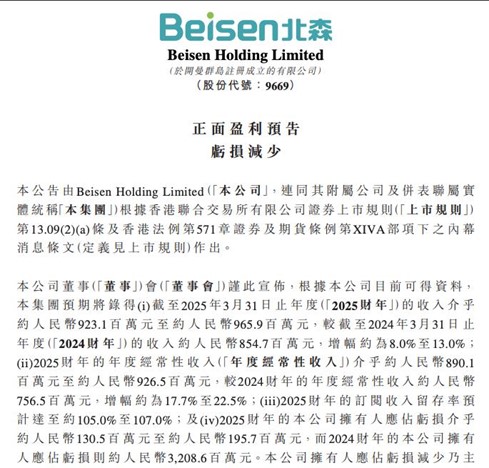
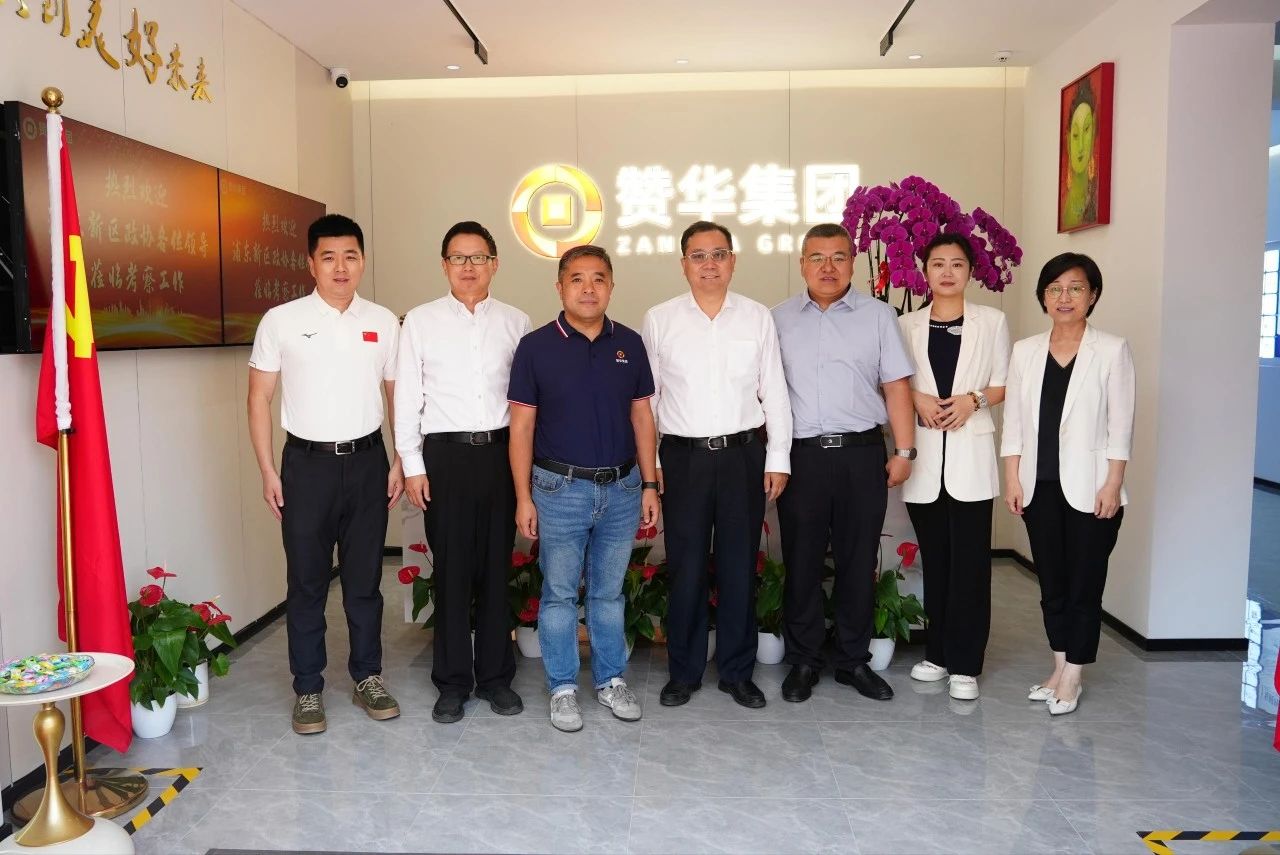
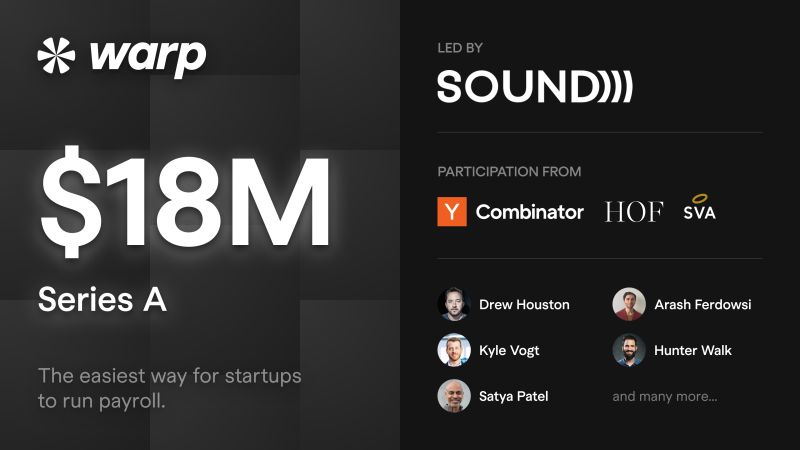
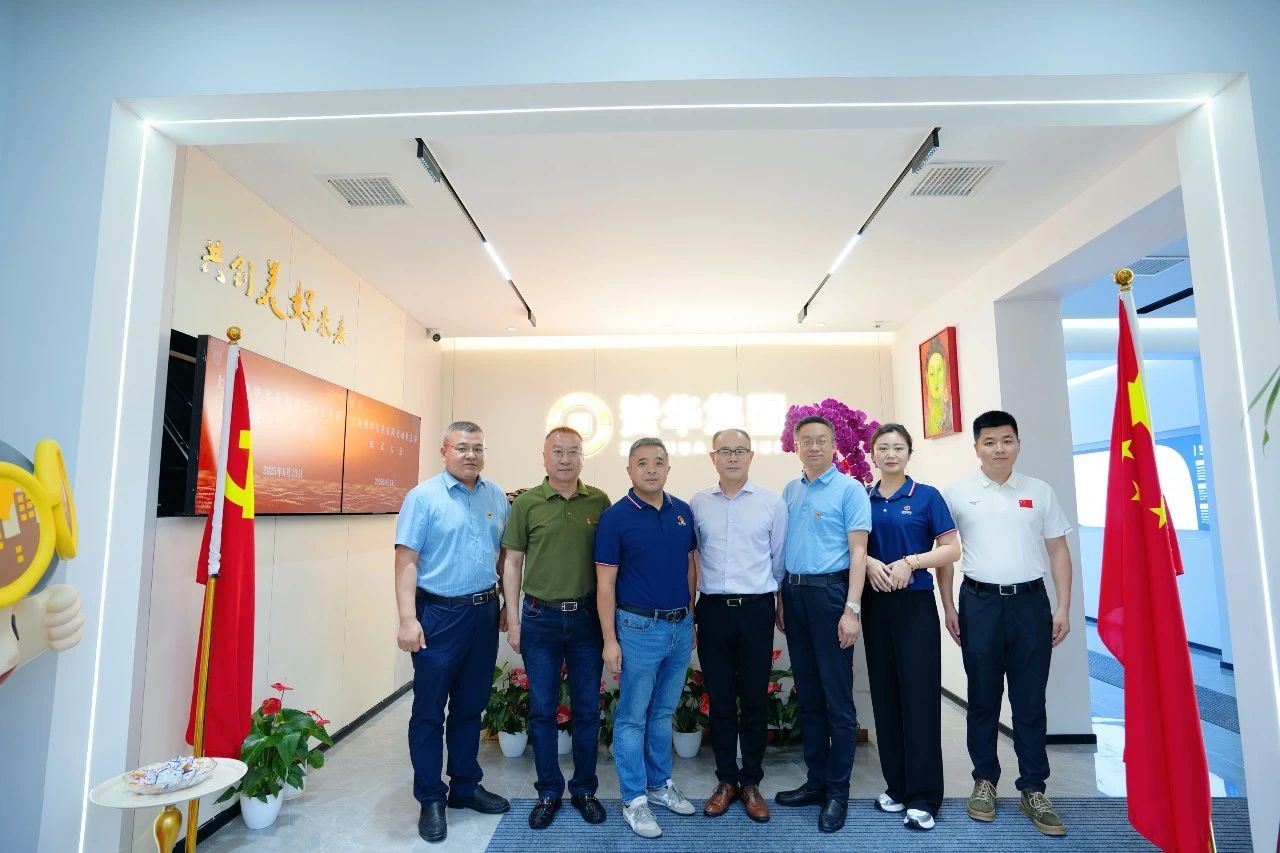
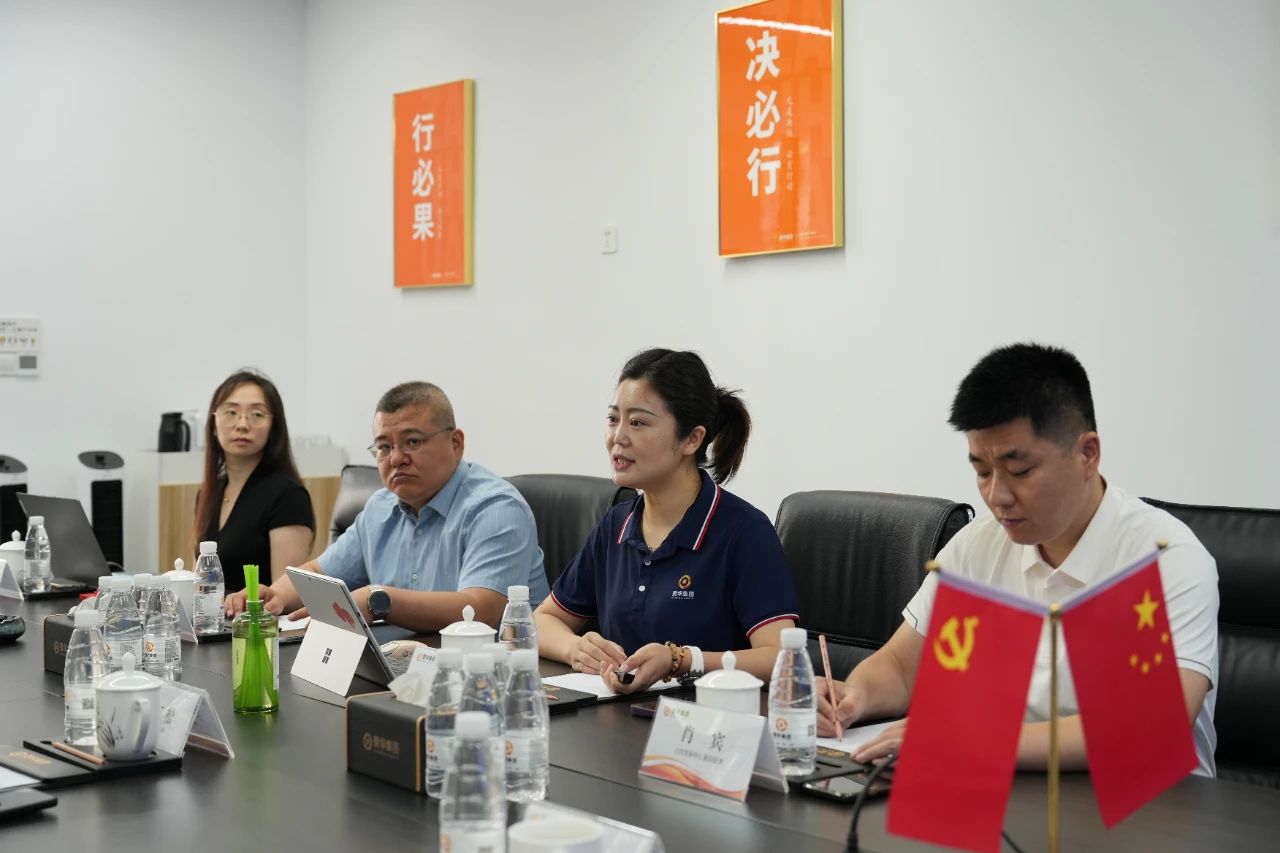
 扫一扫 加微信
hrtechchina
扫一扫 加微信
hrtechchina

